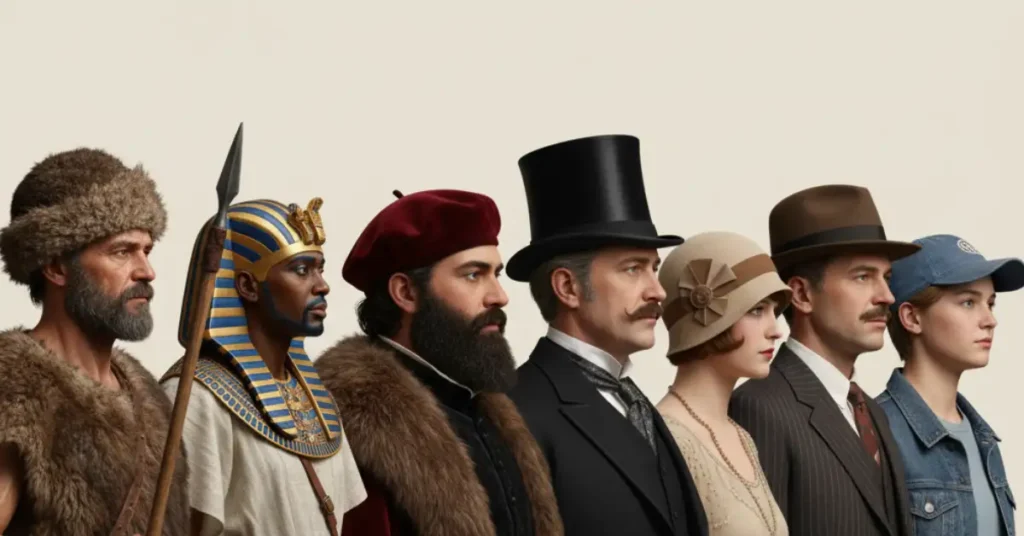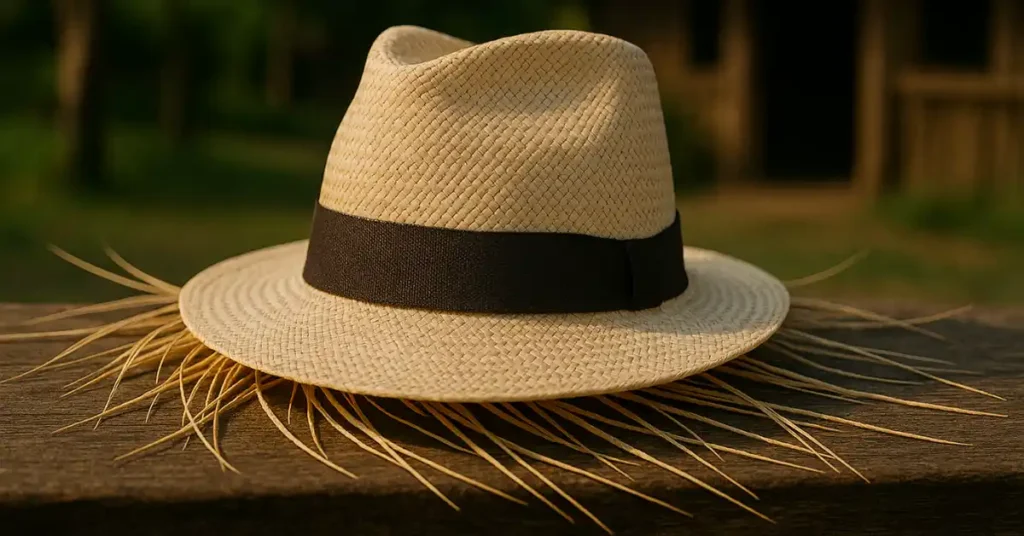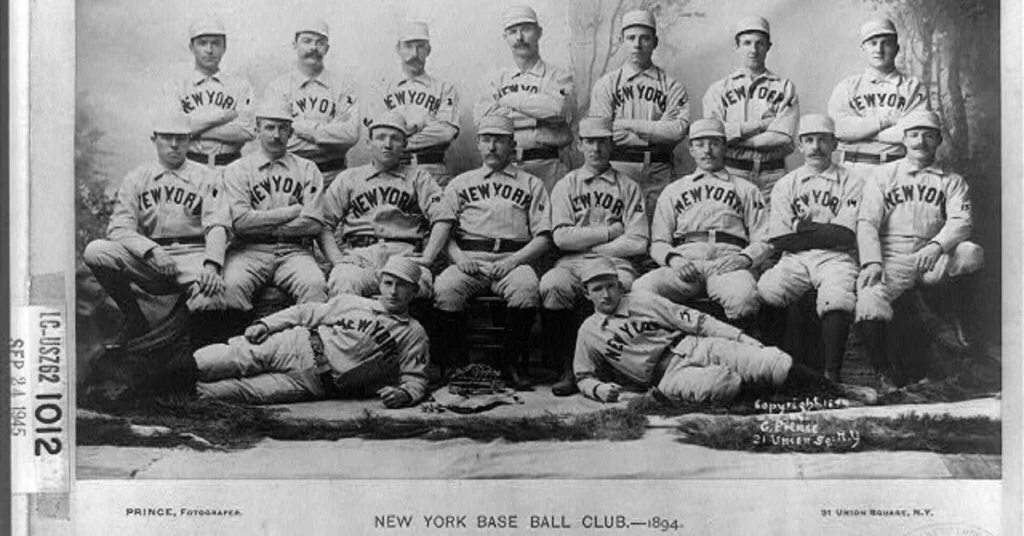The history of the hat goes back thousands of years. According to historians and sources, such as Wikipedia, the earliest known hat was worn by Ötzi the Iceman, whose preserved body was discovered in the Alps between Austria and Italy.
He lived around 3250 BC and wore a stitched bearskin hat with a chin strap, indicating that headwear already had both practical and cultural purposes.
Since then, hats have evolved into symbols of fashion, status, and identity across different cultures and centuries. From ancient times to the modern world, each era has given the hat new meaning and design.
In this article, we’ll explore how hats have evolved from ancient times to the modern day.
What Is a Hat?
A hat is a type of headwear worn for warmth, sun protection, work, cultural traditions, or fashion. Hats can be made from materials like straw, felt, leather, or fabric.
They typically feature a crown and a brim, both of which can vary in shape and size depending on the style. To understand hats better, it helps to know the basic parts of a hat. Each part serves a purpose and adds to the hat’s overall design and meaning.
The History of Hats: From Ancient Civilizations to Modern Style
Let’s see how hats changed over the centuries and the styles that shaped fashion through the ages.
Origins: Hats in Ancient Civilization
The history of headwear begins in prehistoric times. One of the oldest signs of headwear is found on the Venus of Willendorf, a small stone figure made around 25,000 BC.
The figure shows a patterned covering on the head. Some historians believe it was a woven cap, while others think it could have been a braided or beaded hairstyle. Either way, it shows that early humans valued decorating their heads.
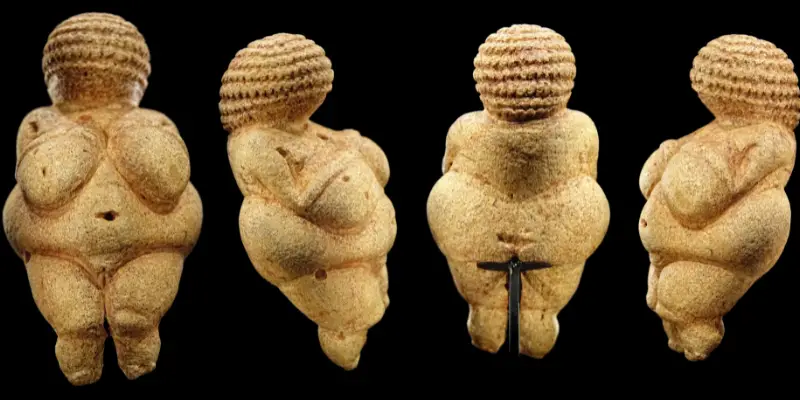
Venus of Willendorf, a Paleolithic figurine dated to 25,000–28,000 BCE, is considered one of the earliest representations of headwear in human history. Image via Wikimedia Commons, licensed under CC BY-SA 4.0.
Early humans also made simple hats from animal skins and plant fibers. These ancient types of hat styles were mainly used to protect from the sun and cold. Farmers, hunters, and peasants wore them as practical defense tools, showing how hats were useful long before they became a fashion statement.
The oldest real example of a hat comes from Ötzi the Iceman, who lived more than 5,000 years ago. His stitched bearskin hat with a chin strap is considered the oldest hat ever found, giving us an answer to questions like what was the first hat and when was the hat invented. This shows that humans have been making headwear for thousands of years.
In ancient Egypt, hats and headdresses showed power and respect. Pharaohs wore special crowns, like the Nemes, while workers used simple cone-shaped straw hats for sun protection. These designs showed the difference between the rich and the common people.
In ancient Greece, travelers and farmers wore the petasos, a wide-brimmed hat for staying cool, while in Rome, freed slaves wore the pileus, a small, round cap without a brim, usually made of wool or felt. This hat marks the origin of the cap, first appearing in Greece around the 4th century BC and later becoming popular in Rome.
In Rome, it was given to freed slaves as a sign of freedom and independence. The cap fit closely to the head and sometimes had a slightly pointed top. Its simple design later inspired other brimless hats in Europe.
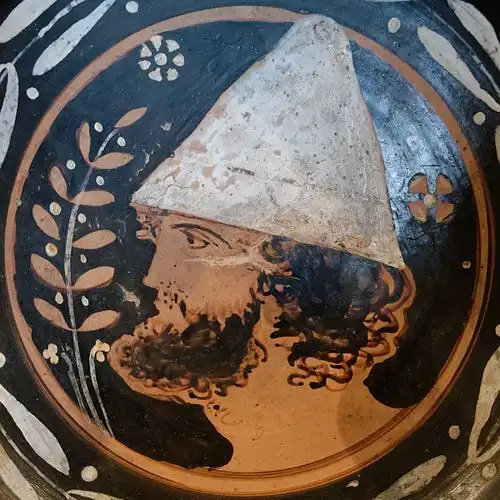
Ancient Greek red-figure painting showing a young warrior wearing a conical pileus hat (c. 380–370 BC). Louvre Museum. Photo by Marie-Lan Nguyen, CC BY 2.5, via Wikimedia Commons.
The Phrygian cap, a red hat with a folded tip, later became a symbol of liberty during the French Revolution.
The zucchetto is a small, round skullcap that first appeared in the 13th century. Catholic clergy wore it to keep their heads warm in cold churches. Its design was inspired by earlier brimless caps, like the pileus, and it is made from silk or fine wool, fitting closely to the head in eight triangular panels.
The color of the zucchetto shows the wearer’s rank: white for the Pope, red for cardinals, purple for bishops, and black for priests. Over time, it became a lasting symbol of the Roman Catholic Church. An example from the Metropolitan Museum of Art, showing how classical designs continued to influence fashion.
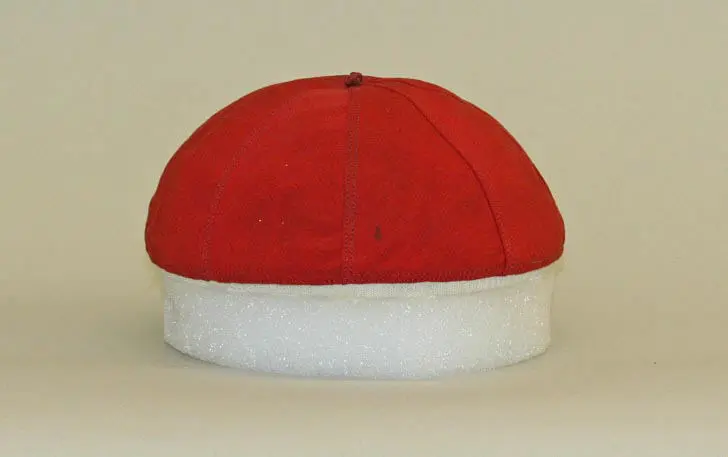
Red zucchetto, a clergy skullcap from the 13th century. Metropolitan Museum of Art.
As civilizations grew, hats evolved from practical protection into powerful symbols of identity, rank, and style.
Medieval & Renaissance Era: Hats of Kings, Knights, and Artists
Between the 5th and 17th centuries, hats became social status, profession, and individuality. What someone wore on their head often revealed their class or occupation.
Nobles and Royals
Wealthy nobles and royals wore ornate hats with feathers, jewels, and fine fabrics like velvet. These hats were meant to show power and style. One popular type was the bycocket, a pointed hat with a feather in front, often associated with the classic ‘Robin Hood’ style.
Another well-known style was the chaperon, which began in the 1300s as a simple hood and evolved into a structured hat with long fabric tails by the 1400s. It became popular among the upper class, according to the Encyclopaedia Britannica.
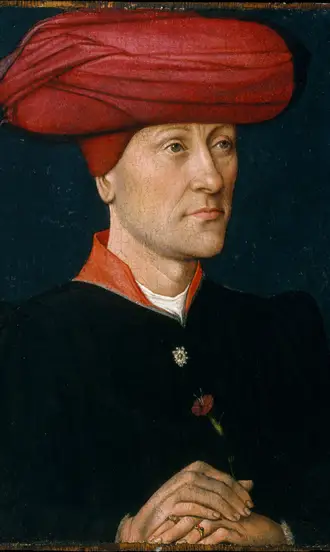
Portrait of a man wearing a red chaperon (15th century). The Metropolitan Museum of Art. Public Domain.
Another example from the late 1400s shows how the chaperon changed again. In this portrait of King Louis XI of France (c.1469), the king wears a brown felt chaperon over a red hood.
By this time, the hat had become more padded and rounded, and the long fabric tail was no longer part of the design. It shows how medieval hoods transitioned into Renaissance hats.
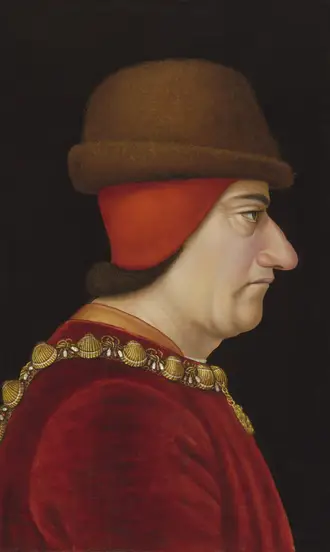
Portrait of King Louis XI of France (c.1469). National Portrait Gallery, London. Public Domain via Wikimedia Commons.
Knights and Soldiers
Soldiers often wore metal helmets in battle, but outside combat, simpler cloth hats like the coif, a tight-fitting cap that could be worn under armor or on its own. They offered comfort, warmth, and sometimes reflected military rank.
Artists and Scholars
Artists and scholars favored soft, practical hats like berets or flat caps made of felt or wool. These hats were easy to wear while working and suited the lifestyle of intellectuals.
For example, Leonardo da Vinci, often depicted in a simple black beret in portraits. One famous painting by Francesco Melzi (1515-1520) shows Leonardo in a simple black hat, highlighting how artists wore practical yet stylish headgear.
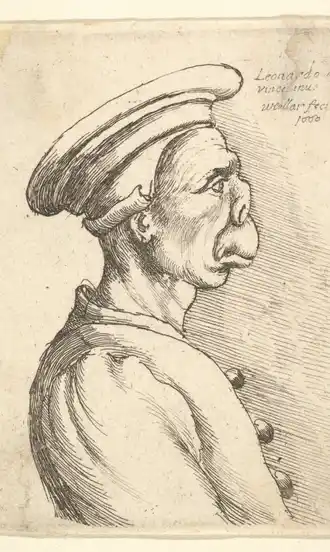
Portrait of Leonardo da Vinci wearing a black beret, painted by Francesco Melzi (1515-1520). Courtesy of The Metropolitan Museum of Art.
Fun Fact: People could often guess someone’s job or social rank just by looking at their hat. It shows why the fashion and status of hats mattered so much in society.
17th and 18th Century: Hats as Fashion Statements
By the 1600s and 1700s, hats became central to European fashion—reflecting class, taste, and politics.
Men’s Hats
Men in this period liked wide-brimmed hats with tall crowns, decorated with lace, feathers, or ribbons. The cavalier hat, popular during the English Civil War, symbolized loyalty and style.
By the 1700s, the cocked hat, also known as the three-cornered hat, became fashionable among gentlemen. It featured a wide brim turned up on three sides, creating its distinctive triangular shape.
During the 18th century, it was most commonly called a cocked hat, but in the 19th century, as the style faded, people began referring to it as the tricorn (from tri-corne, meaning “three-cornered”).
Both names describe the same hat; the difference lies mainly in the period when each term was used.
An example can be seen in the portrait of John Talbot, 1st Earl Talbot, painted by Pompeo Batoni in 1773. He is shown wearing a tricorn hat during his Grand Tour of Europe, highlighting how hats reflected social status and refinement.
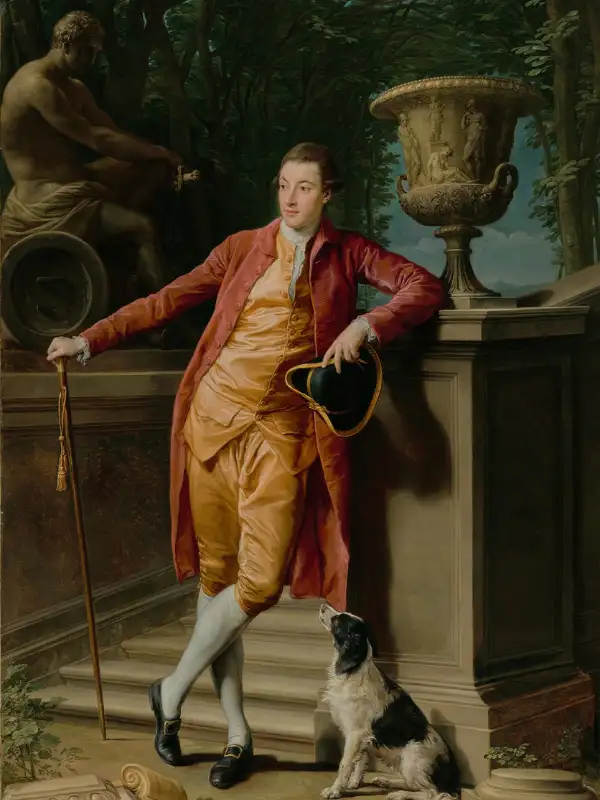
Portrait of John Talbot, wearing a tricorn hat, showing social status and refinement (1773, Pompeo Batoni). Courtesy of the J. Paul Getty Museum. Public Domain.
This style became so iconic that George Washington and American Revolutionary soldiers often wore it. It was neat, sharp, and perfect for military and formal wear.
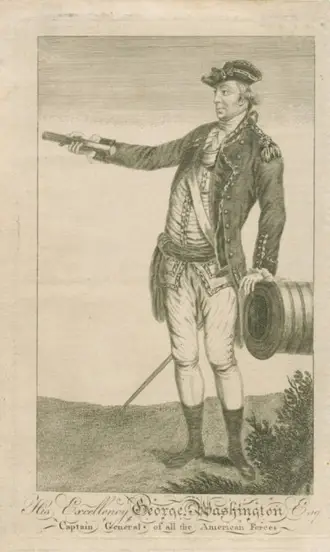
Portrait of George Washington wearing a tricorn hat during the American Revolution. Courtesy of the Mount Vernon Ladies’ Association.
Another popular style was the bicorne, worn by naval officers like Admiral Lord Nelson. His famous appearance atop Trafalgar Square in London shows him wearing a bicorne, representing naval power during the late 1700s and early 1800s.
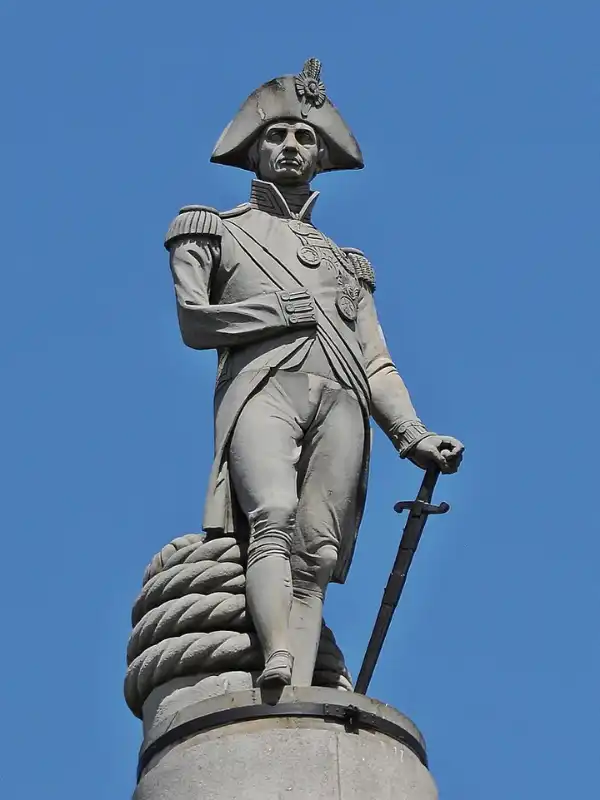
Admiral Lord Nelson, wearing a bicorne hat, a symbol of naval power. Image source: Wikimedia Commons, Public Domain.
The bicorne later became famous because of Napoleon Bonaparte, who wore it during the late 1700s and early 1800s. He wore it sideways rather than front to back, creating the well-known “Napoleonic” style. His plain black felt hat, without lace or feathers, showed his preference for practicality and military authority.
An example can be seen in Horace Vernet’s 1836 painting The Battle of Jena, where Napoleon is shown wearing his trademark bicorne, now remembered as a symbol of early 19th-century leadership and design.
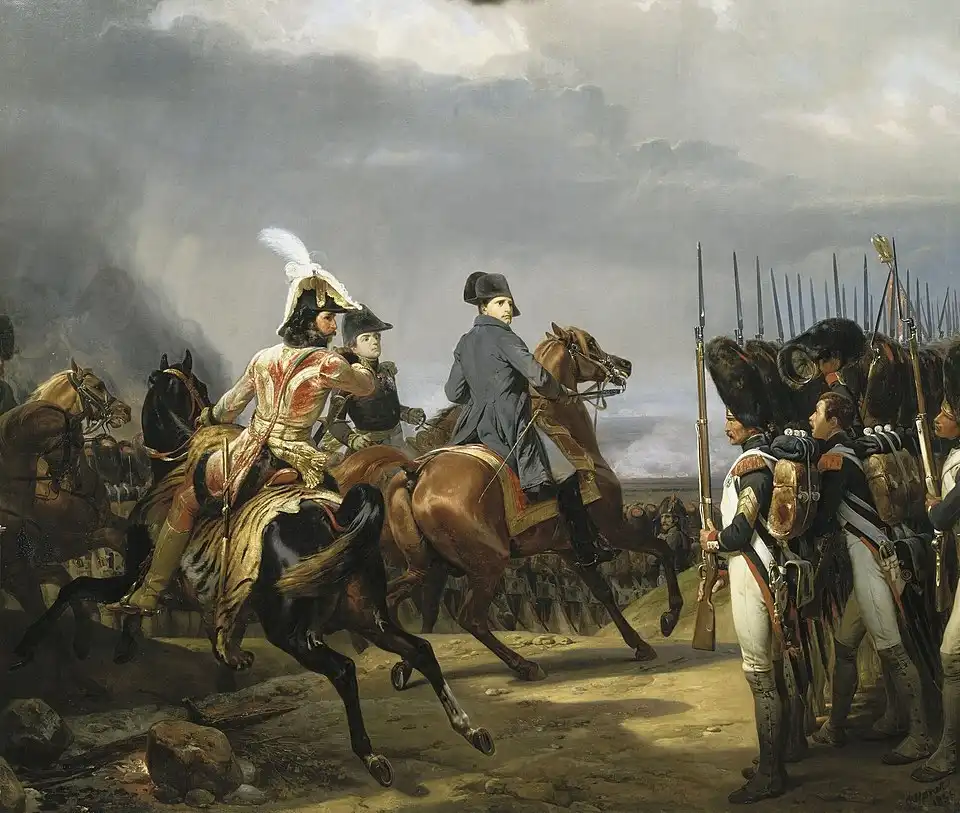
Horace Vernet, The Battle of Jena, 1836. Napoleon Bonaparte wearing his famous bicorne hat. Oil on canvas, Château de Versailles, France. Public domain image via Wikimedia Commons.
Women’s Hats
Women’s fashion in the 1700s was incomplete without a stylish hat. The shepherdess hat, also called the bergère, had a wide brim and shallow crown. It was tied under the chin with ribbons and became especially popular in the 1750s and 1760s for sunny garden walks and outdoor activities.
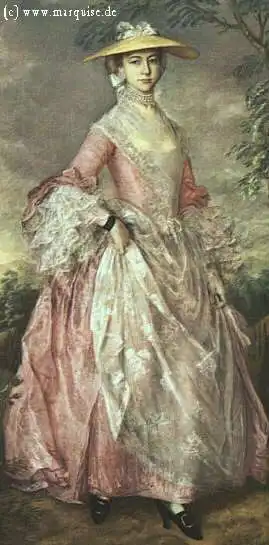
18th-century woman wearing a wide-brimmed bergère hat with ribbon in the 1760s [marquise.de]
Another unusual but practical style was the calash, a folding bonnet shaped like the top of a carriage. Women wore it to protect their tall, elaborate hairstyles from wind or rain.
19th Century: The Golden Age of Hats
As the 19th century began, hats moved away from military styles and became a key part of daily dress. They showed style, social status, and good manners. Women’s hats changed with fashion trends, seasons, and special occasions.
By the early 1820s, bonnets became larger and more decorative. Fashion plates and hat pictures from 1822, like “Fashionable Bonnets for the Carriage and Public Promenades,” show wide brims, soft fabric layers, and ribbons tied under the chin. Women wore these bonnets for carriage rides and outdoor walks.
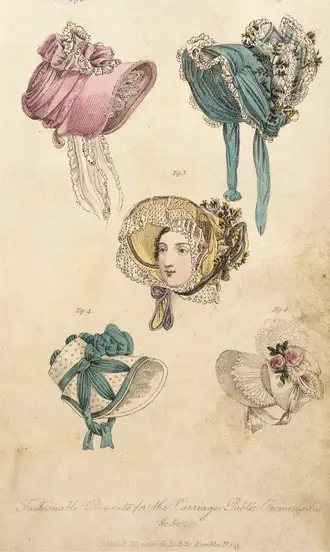
1822 fashion plate showing wide-brimmed bonnets with ribbons for carriage rides and outdoor walks. Image via Los Angeles County Museum of Art, public domain.
In the 1830s and 1840s, the bonnet board became popular. It was a firmer kind of bonnet that kept its shape better, making the hat look neat while still being decorative.
By the mid-1800s, women began wearing wide-brimmed hats for daytime outings. These hats gave better sun protection and were often decorated to match outfits. In the 1860s, the pork pie hat appeared. It was flat on top with a short brim. It first became trendy with women and later gained popularity with men.
Later in the century, hats became even more elaborate. Lace and tulle bonnets decorated with flowers, feathers, and ribbons became fashionable accessories that framed the face and completed formal outfits. Some examples from the 1880s, like those preserved in the Nordiska Museet in Sweden, show how hats had become almost like little works of art.
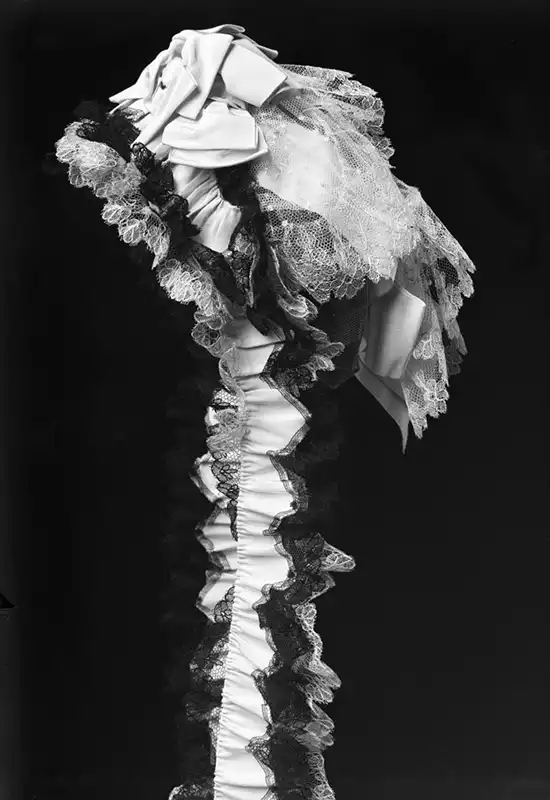
18th-century women’s bonnet made of lace and tulle with ribbons, from the 1880s. Part of the Nordiska Museet collection, Sweden. Public Domain.
By the 1890s, the trilby hat came into fashion. It had a narrow brim and a slight dip in the crown. It looked modern and stylish for that time.
In the 19th century, men’s hats were both practical and fashionable. Early on, the beret was worn by artists and intellectuals. Johann David Passavant painted himself wearing a black beret in 1818, showing how hats could reflect personality and creativity.
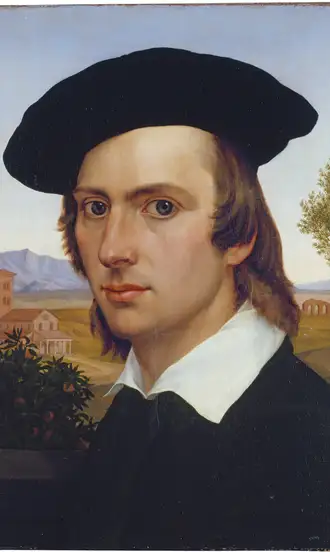
Self-Portrait with Beret by Johann David Passavant (1818). Städel Museum, Frankfurt am Main. Shows creativity and intellectual identity through headwear
By the mid-1800s, the top hat became the symbol of class and sophistication. Tall and sleek, usually made from silk or beaver felt, it was paired with long frock coats and patterned trousers for formal events or city wear.
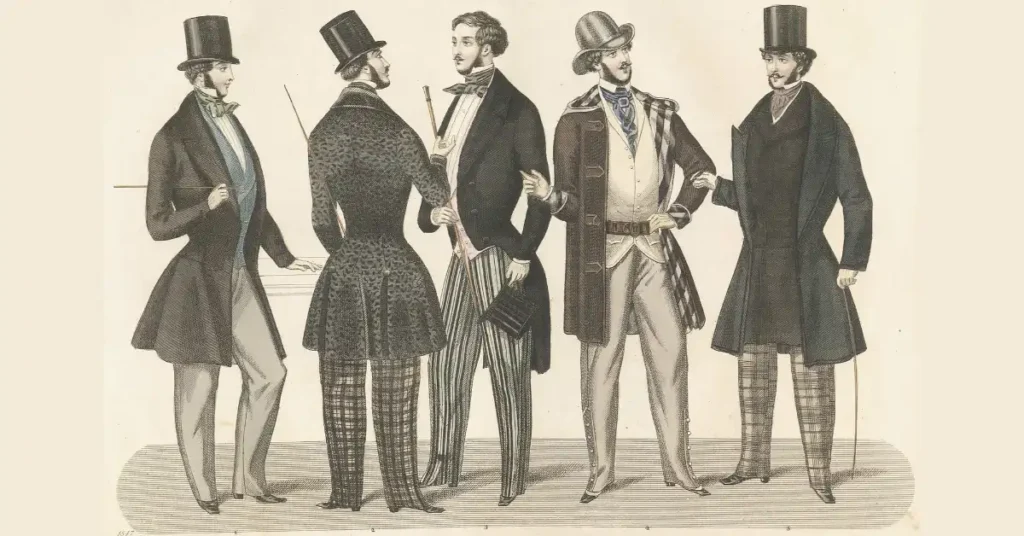
Gentleman wearing a tall black top hat, from Stockholm Fashion Magazine (1847). Public domain image via Wikimedia Commons.
In 1849, the bowler hat (also called the derby hat) was introduced. Sturdy and practical, it became popular among city workers, businessmen, and horseback riders. The flat cap was another common style, soft and simple, worn by working-class men for everyday use.
The baseball cap appeared in the 1860s when the Brooklyn Excelsiors used it during games to shield their eyes from the sun. Over time, it became one of the most common everyday hats worldwide. You can learn more about the origins of the baseball cap in our detailed article.
By the late 1800s, the fedora became fashionable. First popular among women, like actress Sarah Bernhardt, it later became a stylish and versatile hat for men, suitable for daily wear. Read about its features and history in our Fedora hat guide article.
20th Century: Hats Evolve with the Times
At the start of the 20th century, hats were an important part of daily life. Women wore large, dramatic hats decorated with feathers, flowers, ribbons, and sometimes even fake birds.
Men often wore bowler hats, small and rounded, good for everyday use and formal occasions. This 1914 portrait of Charlie Chaplin shows the bowler hat and how it was worn at the time.
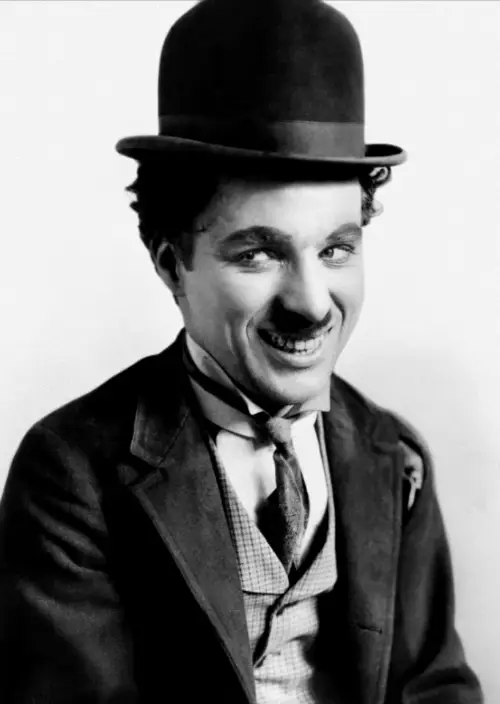
Charlie Chaplin as the Little Tramp wearing his signature small black bowler hat in 1914. This portrait shows the classic early 20th-century men’s hat style. Image via Wikimedia Commons, Public Domain.
In the 1920s, women’s fashion changed. The cloche hat became very popular. It fit closely to the head and looked perfect with short hairstyles. Hats were considered both fashionable and proper; most women would not leave home without one. This 1927 portrait of Vilma Bánky shows her wearing a cloche hat, reflecting the style and elegance of the period.
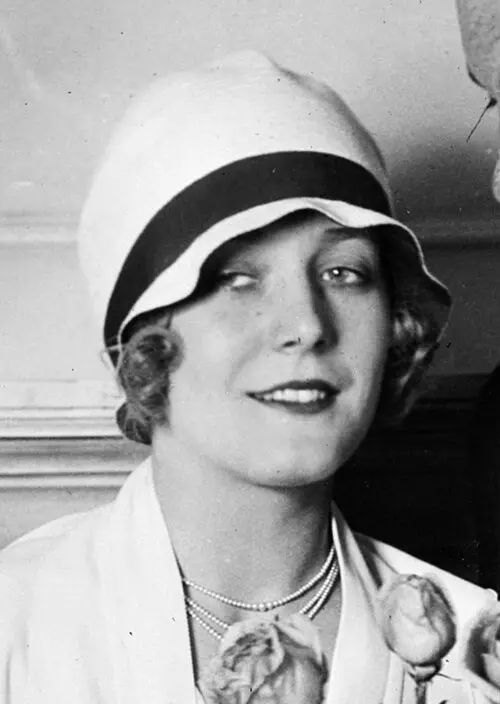
Vilma Bánky wearing a stylish cloche hat in 1927. Hungarian-American silent film actress. Image via Library of Congress, public domain.
Men continued to wear fedoras, flat caps, and Panama hats, which were both stylish and practical for daily life and social occasions. You can explore the story of Panama hats and how they became iconic in our dedicated guide.
By the early 1960s, the Homburg hat became a popular formal style for men. It had a stiff crown with a single dent, a wide brim with a slight curl, and a silk band around the base. This 1961 photograph from West Berlin, Konrad Adenauer and Willy Brandt wearing Homburg hats as part of their formal attire, shows mid-century men’s fashion.
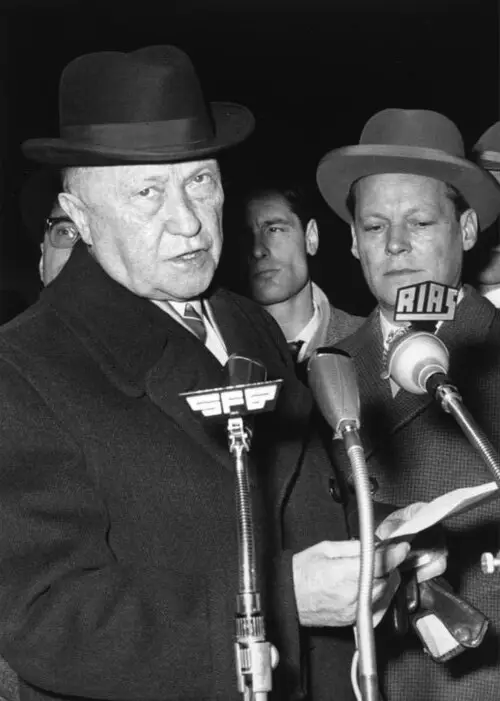
Homburg hats worn in West Berlin, 1961. Image by Bundesarchiv, B 145 Bild-P046883 / CC-BY-SA 3.0, via Wikimedia Commons.
After World War II, fashion became more casual. Daily hat-wearing started to decline, but hats never fully disappeared. They remained a key fashion accessory for expressing style and identity.
Modern Hats: From Sportswear to Street Style
Today, hats are mostly about personal style rather than strict rules or traditions. People wear them for sun protection, fashion, or just for fun. Among all styles, the baseball cap is one of the most popular hats worldwide, seen on athletes, celebrities, and everyday people.
Other popular hat styles include beanies, bucket hats, and snapbacks. These modern hats are not just accessories—they are a way for people to express their personality, identity, and fashion sense.
What Do Hats Symbolize?
Hats show authority, social status, profession, and culture. Crowns, for example, show power and royalty. A judge’s wig or cap represents law and authority, while a tall top hat in the 1800s indicated wealth and social rank. Some hats also carry religious meaning, like turbans or yarmulkes (kippahs).
Hats can also be fun and expressive. At weddings or festivals, people often wear colorful and decorative hats. Some professional hats show skill or experience, such as a chef’s tall white toque. As noted by Everyday Uniforms, taller hats or more pleats indicate greater experience.
Even today, hats tell a story about the wearer. A cowboy hat can represent the Wild West, and a graduation cap marks achievement.
5 Interesting Hat Facts
- There are more than 140 different types of hats around the world, ranging from ceremonial headwear to casual streetwear.
- Male hat makers are called hatters, while female hat designers are known as milliners.
- Despite their name, Panama hats actually come from Ecuador.
- Britain had a hat tax from 1784 to 1811. The fancier the hat, the higher the tax.
- National Hat Day is celebrated every year on January 15 in the United States.
Conclusion: Hats Through History
Hats have always been more than something to wear on your head. They tell stories, show status, and reflect culture. From ancient hunters to modern streetwear, hats have adapted to changing fashion and society.
People wear hats for protection, style, or cultural reasons, and they remain an important part of daily life and special occasions.
No matter the era, hats continue to help people express their personality and identity. From a cowboy hat to a baseball cap, every hat has a story.
Did we miss anything important in the origins of hats? Feel free to share your thoughts or any questions you have in the comments below!
FAQs about the History of Hats
What is the main purpose of wearing a hat?
The main purpose of wearing a hat is to protect the head from the sun, rain, or cold. Hats are also worn as a fashion statement or cultural symbol.
Who invented the first hat?
The first hat is unknown, but Ötzi the Iceman wore the oldest known hat around 3250 BC.
Are hats still popular today?
Yes. Hats are still popular for fashion, protection, and cultural reasons. They are worn by athletes, celebrities, and everyday people worldwide.
Why don’t men wear top hats anymore?
Men stopped wearing top hats regularly as fashion became more casual and practical styles took over.
When did tricorn hats go out of style?
Tricorn hats were most popular in the 1700s. By the early 1800s, they gradually went out of fashion as taller and more structured hats, like the top hat, became popular among men.
Why did people wear hats in the past?
People wore hats in the past for many reasons. They offered protection from the sun, rain, and cold. Hats also showed social status, profession, and style, and in some cases, they had religious or ceremonial significance.
